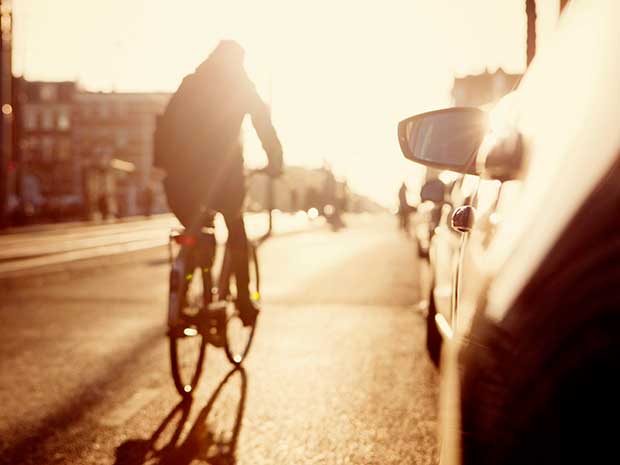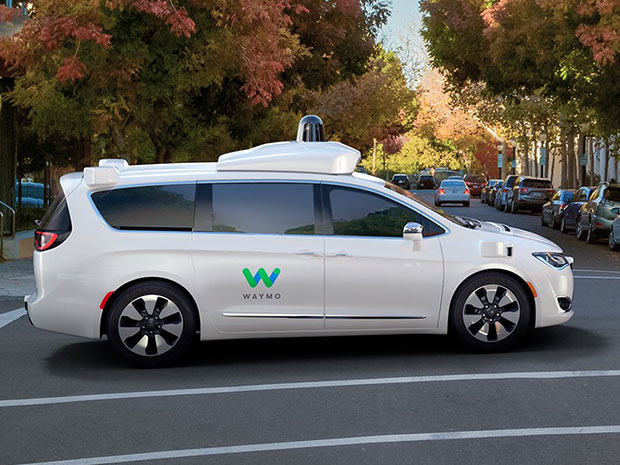Robo-mobiles have problems with cyclists.

Robomobili perfectly track other cars, and they are getting better at noticing pedestrians, squirrels and birds. The main problem remains only the most light, quiet and nimble means of transportation.
“The task of detecting bicycles is perhaps the most difficult of the tasks facing the development of systems for robots,” says research engineer Steven Schladover of the University of California at Berkeley.
')
Nuno Vasconcelos, a computer vision expert at the University of California at San Diego, says that the problem of detecting bicycles is difficult because of their relatively small size, speed and diversity. “A machine is essentially a big block of substance. The mass of bicycles is much smaller, and they can look different - they have many shapes, colors, and it happens that people hang them with junk. ”
Therefore, the accuracy of detection of cars in recent years has exceeded the accuracy of detection of bicycles. Most of the improvements were made when learning systems in which they studied thousands of photographs with labeled objects. And most of the training focused on the images of cars, not bicycles.
Take the algorithm Deep3DBox , recently presented by researchers from the University. George Mason and developer of the Zoox robotaxy from Menlo Park. In the industry-standard test of the system, in which it tries to disassemble two-dimensional images , Deep3DBox identified 89% of cars. A few years ago, such systems managed no more than 70%.
Deep3DBox also copes well with a more difficult task: with predicting which way the transport goes and with the generation of a three-dimensional container for objects in a two-dimensional image. “Deep learning is usually used for simple detection of sequences in pixels. We came up with an effective way to use this technology to determine the geometric properties of objects, ”says project participant Jana Košecká, a programmer at the University. George Mason
But the system is noticeably worse at detecting and targeting bicycles and cyclists. Deep3DBox is one of the best systems, but in tests it only recognizes 74% of bicycles. And although she can correctly orient more than 88% of the cars in the pictures, in the case of bicycles this is obtained from her only in 59% of cases.
Koshetska says that commercial systems do a better job when developers get access to huge sets of images taken on the road, with which you can train a computer. According to her, most of the test robo-mobiles complement the image processing laser scanning ( lidar ) and radar, which help to recognize bicycles and their position relative to the robility mobile, even if they do not report anything about its orientation.
High resolution maps are helping to accomplish new breakthroughs - for example, Road Experience Management from Mobileye, an Israeli company. These cards give the computer an advantage for recognizing bikes, because these bikes look like anomalies on previously recorded images of the road. Ford Motor Company says that three-dimensional high-detail maps are at the heart of the 70 test robots that it plans to launch on the roads this year.
Put it all together, and you can get quite impressive results - and they were demonstrated last year by devices from Google . Waymo , a breakaway company from Google's ro-mobiles, demonstrated its own sensor technology that improves the ability of the system to recognize bicycles.

Vasconcelos doubts that the existing object recognition and automation systems can replace human drivers, but believes that they are already sufficiently developed to help people avoid accidents. The recognition of cyclists is already beginning to be put on as a supplement to the commercial automatic braking system (AEB) installed on ordinary cars and capable of recognizing not only cars, but also pedestrians with cyclists.
The first AEB system that recognizes cyclists was proposed by Volvo in 2013. It processes data from the camera and radar, predicting possible collisions. This technology this year will be run-in on European buses. Other automakers are expected to catch up after this, as European regulators are starting to evaluate AEB systems for the quality of recognition of cyclists next year.
But such systems still suffer from serious constraints, from which another complex task for developers follows: predicting the direction of motion of moving objects. It will be especially difficult to pull out even more data from AEB systems that recognize cyclists - as Olaf Op den Camp, a senior consultant at the Netherlands Organization for Applied Scientific Research, says. Opnen Kamp, who led the development of the European test for AEB-systems with bicycle recognition , says that it is the movements of cyclists that are most difficult to predict.
Koshetska agrees with him: "Cyclists are much less predictable than cars, because it is much easier for them to make sudden turns or jump out of nowhere."
And this means that it will take a long time before cyclists can avoid human errors, with which 94% of accidents are connected, according to US regulators. “All cyclists with joyful hope are waiting for this moment,” says Brian Wiedenmeier, executive director of the San Francisco Cyclists Coalition. But he says the right thing is to wait until the automation technologies mature.
In December, Weidenmeyer warned that Robertaxi, represented by Uber Technologies, violated California's traffic regulations, which were specifically designed to protect cyclists from cars and trucks crossing designated bicycle lanes. He supported the withdrawal of registrations of such cars after the company refused to obtain permits for them. Uber is still testing its robomobils in Arizona and Pittsburgh, and recently received permission to return some cars to the streets of San Francisco, but only as a marking machine, which will be driven by drivers.
Weidenmeyer says that Uber is in a hurry to enter the market, and this is wrong. He argues: "Like any new technology, this should be checked very carefully."
Source: https://habr.com/ru/post/402653/
All Articles